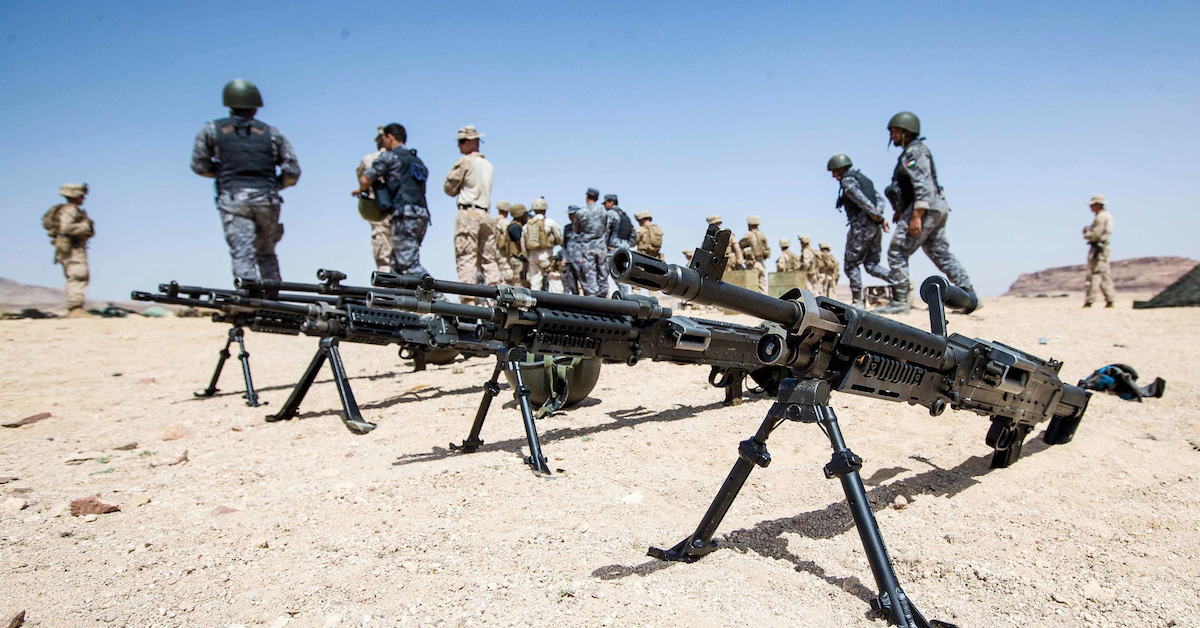5 key features that define a machine gun

SUMMARY
Even within the military, there are people who use the terms "machine gun" and "automatic rifle" interchangeably. While these classifications of weapon share similar functions and mechanics, it's important to understand that they are, in fact, not the same.
In terms of mechanics, machine guns and automatic rifles are both capable of fully automatic fire. But, beyond that, there are some key differences. Due to differences in range and firing rate, you should never send an automatic rifle to do a machine gun's job, or vice versa. Here are some of the key features you will find on a machine gun but not on an automatic rifle.
Hearing a machine gun firing is glorious, though.
One firing option
Machine guns are absolutely designed for automatic fire, but here's the thing: most machine guns only have that option. You can either have the weapon on safe or fully automatic. Conversely, with an automatic rifle, there's an option for semi-automatic fire when full-auto is not tactically wise.
There's a reason they're always carried on the shoulder.
Weight
Probably the biggest and most notable difference, machine guns are inherently heavier. Even the M249 Squad Automatic Weapon, a "light" machine gun, weighs 17 lbs when empty. While 17 lbs may not sound like a lot, when you take into consideration the amount of ammunition you'll need to carry and the weight of your other gear, it adds up.
Automatic rifles, specifically the M27, don't compare — even when loaded.
The ammunition is also loaded onto a feeding tray.
Belt-fed ammunition
Plenty of machine guns offer a magazine-fed option, but that's really only for extremely dire situations in which belt-fed ammunition isn't easily available. An automatic rifle may be modified to be belt-fed, but the original design calls for magazines.
Melting the barrel would probably be an expensive — but amazing — "accident."
Changeable barrel
Firing hundreds of rounds in rapid succession gets the barrel so hot it runs the risk of melting. So, to prevent machine guns from destroying themselves, barrels can be exchanged after a certain amount of time or number of bullets fired. An automatic rifle doesn't need this option.
You can't complete a disassembly without removing the buttstock.
Removable buttstock and pistol grip
In order to remove certain parts inside a machine gun's receiver, the buttstock and pistol grip must first be removed. With an automatic rifle, the buffer and buffer spring can be removed by separating the upper and lower receiver.
SHARE
